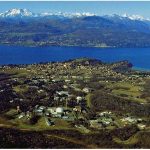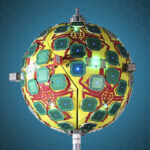
Swindon, UK–based start-up company Air Semiconductor is aiming its first OEM GPS product at what it hopes is a sweet spot in the market: geotagging digital camera photos.
And it may be pointing in the right direction, according to a new IMS Research report that predicts a 200 percent cumulative annual growth rate (CAGR) for GNSS-aided digital cameras over the next five years.
Swindon, UK–based start-up company Air Semiconductor is aiming its first OEM GPS product at what it hopes is a sweet spot in the market: geotagging digital camera photos.
And it may be pointing in the right direction, according to a new IMS Research report that predicts a 200 percent cumulative annual growth rate (CAGR) for GNSS-aided digital cameras over the next five years.
But Air Semiconductor isn’t alone in probing this potentially lucrative market. Geotate, a wholly owned subsidiary of NXP Semiconductor, launched its new Snapspot product at this week’s International Photo Marketing Association (PMA) Convention and Trade Show in Las Vegas (as Air Semiconductor did with its Aiwave 1 chip).
Although a number of GPS cameras are currently on the market, sales remained below a million units in 2006 (out of 100 million digital cameras shipped that year), according to IMS. the key to capturing this market will be ultra-low power GNSS solutions that can provide extremely rapid time to first fixes (TTFFs).
“Camera manufacturers are unsure of traditional solutions because they are too power hungry, too expensive and take too long to get a location fix,” says Matia Grossi, author of the IMS Research report.
Air Semiconductor’s product, Airwave 1, is designed to solve the problem by providing continuous position fixes at varying levels of accuracy, depending on the application. The Airwave algorithm essentially trades off accuracy for lower power consumption, but reportedly enables a very warm start to the processing.
Both the GPS 0.13 micron chip (RFIC, digital signal processor) and software are proprietary Air Semiconductor assets with several patents pending in confidential filings, the company’s CEO Steve Graham told Inside GNSS. Graham co-founded the company in 2006 with David Tester, an engineer and Air Semiconductor’s chief technology officer who was a former leader of Conexant’s GPS group.
Engineering samples will go to customers this summer, says Graham, and the 12-person company expects to see its first revenue by the end of 2008. Financially backed by Pond Venture Partners, a European early-stage technology venture capital fund, Air Semiconductors has 12 employees and is currently recruiting.
The company expects to follow the Airwave-1 with products targeting other applications such as location-based alarms, push advertising, and tracking.
In contrast, Geotate’s patented approach captures raw GPS satellite signals in the available memory that are later unlocked via a web-based service. A short sample of the GPS satellite signal (less than two-10ths of a second) is captured and stored with the camera image. Later a user transfers the signal samples to a computer and then accesses Geotate’s on-line Capture and Process Server, which processes the signal sample to calculate the location where the samples were captured.
In a PMA 2008 preview, Altek Corporation, a digital still camera (DSC) original design manufacturer, demonstrated a DSC that incorporated the Snapspot technology.
According to a Geotate white paper, the Snapspot process uses 10 millijoules (mJ) of energy per capture: 5mJ for the GPS circuitry, and an estimated 5mJ by the processor storing the signal data in memory. The company claims a single-fix of 11 meters circular error probable (CEP) 90 percent of the time under good GPS signal conditions (signal received at at -130dBm) and 25 meters CEP under poor conditions (-140dBm).
The Geotate approach brings to mind the near-realtime offboard-processing solutions of GPS translators used, for example, in early ballistic missile tracking systems. Only in the case of Snapspot, the GPS signal sample is postprocessed via an Internet-based solution.
Geotate recently announced a collaboration with Rakon Limited of Auckland, New Zealand, to develop a solution for the digital camera application using Rakon’s GRM 6510 module. The resulting module has a 6×5-millimeter footprint and incorporates an low noise amplifier, RF application specific integrated circuit, surface acoustical wave filter, IF filter, and 0.5ppm temperature-controlled crystal oscillator on a ceramic substrate.
In addition to its GPS software, Geotate says it also provides example firmware for controlling the GPS radio and integration support to mitigate RF interference.
Geotate reportedly is in the final stage of spinout negotiations with an investor, with a deal expected to close by the end of the first quarter 2008. In December, NXP announced plans to purchase GNSS chip manufacturer GloNav, Inc.





